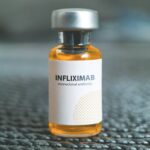‘Physical therapy is a mainstay of managing rheumatic diseases, but what’s the evidence, how do we monitor, and what types of therapy should we advocate?’ asks Physician Editor Bharat Kumar, MD, MME, FACP, FAAAAI, RhMSUS. ‘Here, we provide some practical recommendations for the everyday rheumatologist.’ Physical activity, including occupational and recreational activities, is one of…









